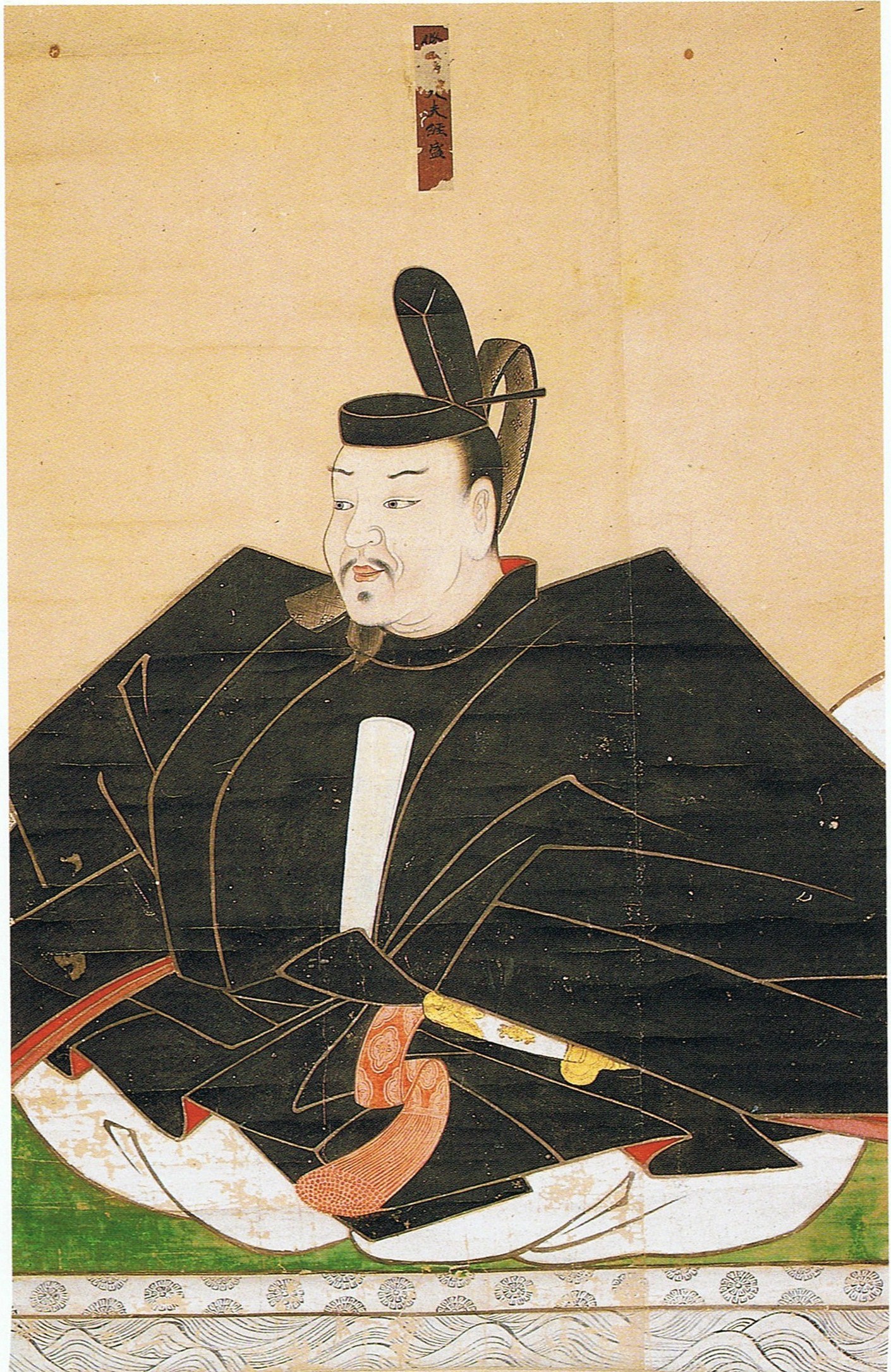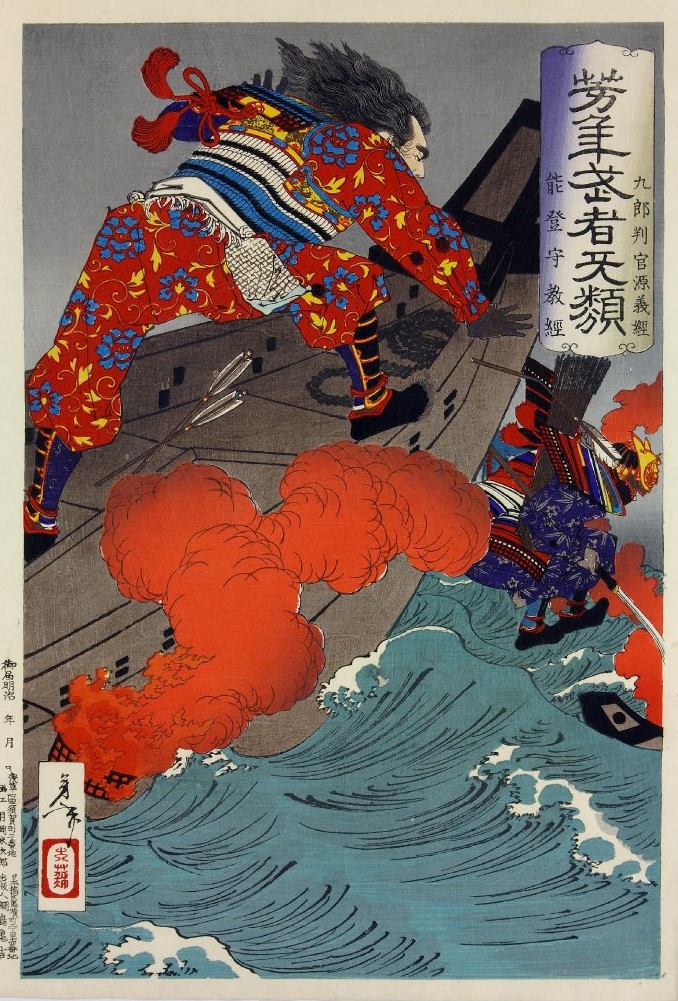|
Taira No Norimori
Taira no Norimori ( ja, 平教盛 たいら の のりもり; 1128–1185) was a commander during the Genpei War and was the 3rd son of Taira no Tadamori. During the Hogen Rebellion, he and his brother supported Emperor Go-Shirakawa. At the Battle of Dan-no-ura, he committed suicide by jumping overboard. His older brother, Taira no Tsunemori, and his son, Taira no Noritsune, also committed suicide Suicide is the act of intentionally causing one's own death. Mental disorders (including depression, bipolar disorder, schizophrenia, personality disorders, anxiety disorders), physical disorders (such as chronic fatigue syndrome), and s ... in the Battle of Dan-no-Ura. {{DEFAULTSORT:Taira no, Norimori 1128 births 1185 deaths People of Heian-period Japan Japanese military personnel who committed suicide Suicides by drowning in Japan Taira clan ... [...More Info...] [...Related Items...] OR: [Wikipedia] [Google] [Baidu] |
Taira No Norimori
Taira no Norimori ( ja, 平教盛 たいら の のりもり; 1128–1185) was a commander during the Genpei War and was the 3rd son of Taira no Tadamori. During the Hogen Rebellion, he and his brother supported Emperor Go-Shirakawa. At the Battle of Dan-no-ura, he committed suicide by jumping overboard. His older brother, Taira no Tsunemori, and his son, Taira no Noritsune, also committed suicide Suicide is the act of intentionally causing one's own death. Mental disorders (including depression, bipolar disorder, schizophrenia, personality disorders, anxiety disorders), physical disorders (such as chronic fatigue syndrome), and s ... in the Battle of Dan-no-Ura. {{DEFAULTSORT:Taira no, Norimori 1128 births 1185 deaths People of Heian-period Japan Japanese military personnel who committed suicide Suicides by drowning in Japan Taira clan ... [...More Info...] [...Related Items...] OR: [Wikipedia] [Google] [Baidu] |
Taira No Tadamori
was the head of the Taira clan. He was son of Taira no Masamori, and father of Taira no Kiyomori. Tadamori was also governor of the provinces of Harima, Ise, Bizen, and Tajima. He consolidated the influence of the Taira clan at the Imperial Court, and is said to have been the first samurai to serve the Emperor directly, at Court. As a servant of the Court, Tadamori waged campaigns, beginning in 1129, against pirates on the coasts of San'yōdō and Nankaidō. He also served his own clan in battling the warrior monks of Nara and of Mount Hiei. Tadamori is also credited with the construction of the Rengeō-in, a major and now-famous temple in Kyoto, which includes the longest wooden building in the world, the Sanjūsangen-dō. Tadamori was granted the governorship of Tajima province as a reward for completing this project. Family * Father: Taira no Masamori * Wife: Gion no Nyogo (?-1147) * Sons: ** Taira no Kiyomori ** Taira no Tsunemori ** Taira no Norimori ** Taira no Tadanori ... [...More Info...] [...Related Items...] OR: [Wikipedia] [Google] [Baidu] |
Emperor Go-Shirakawa
was the 77th emperor of Japan, according to the traditional order of succession. His de jure reign spanned the years from 1155 through 1158, though arguably he effectively maintained imperial power for almost thirty-seven years through the ''insei'' system – scholars differ as to whether his rule can be truly considered part of the ''insei'' system, given that the Hōgen Rebellion undermined the imperial position. However, it is broadly acknowledged that by politically outmaneuvering his opponents, he attained greater influence and power than the diminished authority of the emperor's position during this period would otherwise allow. Posthumously, this 12th-century sovereign was named after the 11th-century Emperor Shirakawa. ''Go-'' (後), translates literally as "later"; and thus, he is sometimes called the "Later Emperor Shirakawa", or in some older sources, may be identified as "Shirakawa, the second" or as "Shirakawa II". Unusually, the years of Go-Shirakawa's reign are ... [...More Info...] [...Related Items...] OR: [Wikipedia] [Google] [Baidu] |
Battle Of Dan-no-ura
The was a major sea battle of the Genpei War, occurring at Dan-no-ura, in the Shimonoseki Strait off the southern tip of Honshū. On April 25, 1185 (or March 24, 1185 by the official page of Shimonoseki City), the fleet of the Minamoto clan (Genji), led by Minamoto no Yoshitsune, defeated the fleet of the Taira clan (Heike). The morning rip tide was an advantage to the Taira in the morning but turned to their disadvantage in the afternoon. The young Emperor Antoku was one of those who died among the Taira nobles. History At the time of the battle, the war was not going well for the Taira. They still had the Emperor on their side as well as the Imperial Regalia which symbolized the Emperor's authority, but had lost much of their territory. Still, the coming battle would be fought in their home territory with the trained southerners fighting in their home waters. The Taira were weaker (despite having more ships), but they had the advantage over the Minamoto in understa ... [...More Info...] [...Related Items...] OR: [Wikipedia] [Google] [Baidu] |
Suicide
Suicide is the act of intentionally causing one's own death. Mental disorders (including depression, bipolar disorder, schizophrenia, personality disorders, anxiety disorders), physical disorders (such as chronic fatigue syndrome), and substance abuse (including alcoholism and the use of and withdrawal from benzodiazepines) are risk factors. Some suicides are impulsive acts due to stress (such as from financial or academic difficulties), relationship problems (such as breakups or divorces), or harassment and bullying. Those who have previously attempted suicide are at a higher risk for future attempts. Effective suicide prevention efforts include limiting access to methods of suicide such as firearms, drugs, and poisons; treating mental disorders and substance abuse; careful media reporting about suicide; and improving economic conditions. Although crisis hotlines are common resources, their effectiveness has not been well studied. The most commonly adopted metho ... [...More Info...] [...Related Items...] OR: [Wikipedia] [Google] [Baidu] |
Taira No Tsunemori
Taira no Tsunemori ( ja, 平經盛 たいら の つねもり) (1124–1185) was the 3rd son of Taira no Tadamori and a younger half-brother of Taira no Kiyomori. He committed suicide with his younger brother, Taira no Norimori, at the Battle of Dan-no-ura, the last battle of the Genpei War The was a national civil war between the Taira and Minamoto clans during the late Heian period of Japan. It resulted in the downfall of the Taira and the establishment of the Kamakura shogunate under Minamoto no Yoritomo, who appointed himself .... {{DEFAULTSORT:Tsunemori, Taira no 1124 births 1185 deaths People of Heian-period Japan Japanese military personnel who committed suicide Suicides by drowning in Japan Taira clan ... [...More Info...] [...Related Items...] OR: [Wikipedia] [Google] [Baidu] |
Taira No Noritsune
(1160 – 1185) was a military leader of the late Heian period of Japan. He was the son of Taira no Norimori. He fought in the Genpei War against the Minamoto clan. Genpei War Noritsune was a commander during the Genpei War. He fought in many battles including the battles of Battle of Mizushima, Mizushima and Battle of Dan-no-ura, Dan-no-ura. He also fought in the Battle of Ichi-no-Tani, and killed Satō Tsugunobu in the Battle of Yashima. Death He committed suicide in the Battle of Dan-no-ura, while holding a Minamoto warrior under each arm plunging into the sea. His father also committed suicide at the same battle. In the play, he is disguised as the priest 'Yokawa no Kakuhan', until he is forced to confess his true identity by Benkei. See also *''The Tale of Heike'' References {{DEFAULTSORT:Taira no, Noritsune 1160 births 1185 deaths Taira clan Suicides by drowning in Japan Kabuki characters ... [...More Info...] [...Related Items...] OR: [Wikipedia] [Google] [Baidu] |
Battle Of Dan-no-Ura
The was a major sea battle of the Genpei War, occurring at Dan-no-ura, in the Shimonoseki Strait off the southern tip of Honshū. On April 25, 1185 (or March 24, 1185 by the official page of Shimonoseki City), the fleet of the Minamoto clan (Genji), led by Minamoto no Yoshitsune, defeated the fleet of the Taira clan (Heike). The morning rip tide was an advantage to the Taira in the morning but turned to their disadvantage in the afternoon. The young Emperor Antoku was one of those who died among the Taira nobles. History At the time of the battle, the war was not going well for the Taira. They still had the Emperor on their side as well as the Imperial Regalia which symbolized the Emperor's authority, but had lost much of their territory. Still, the coming battle would be fought in their home territory with the trained southerners fighting in their home waters. The Taira were weaker (despite having more ships), but they had the advantage over the Minamoto in understa ... [...More Info...] [...Related Items...] OR: [Wikipedia] [Google] [Baidu] |
1128 Births
Year 1128 ( MCXXVIII) was a leap year starting on Sunday (link will display the full calendar) of the Julian calendar. Events By place Byzantine Empire * Byzantine–Hungarian War: Emperor John II (Komnenos) defeats the Hungarians and their Serbian allies at the fortress of Haram (or Chramon), which is modern-day Nova Palanka. Europe * June 24 – Battle of São Mamede: Count Alfonso I (Henriques) defeats the forces led by his mother, Queen Theresa of Portugal, near Guimarães, and gains control of the county. Alfonso styles himself "Prince of Portugal". * June 29 – Conrad III, anti-king of Germany, is crowned "King of Italy" by Archbishop Anselmo della Pusterla at Monza in Lombardy. * July 27 – The city of Bruges (modern Belgium) is founded. It receives its city charter – as well new walls and canals are built. * Pope Honorius II invests Roger II of Sicily as duke of Apulia at Benevento, after his failure to form an coalition against R ... [...More Info...] [...Related Items...] OR: [Wikipedia] [Google] [Baidu] |
1185 Deaths
Year 1185 ( MCLXXXV) was a common year starting on Tuesday (link will display the full calendar) of the Julian calendar. Events By place Byzantine Empire * August – King William II (the Good) lands in Epirus with a Siculo-Norman expeditionary force of 200 ships and 80,000 men (including 5,000 knights), and marches as far as the Byzantine city of Thessalonica, which he takes and pillages (massacring some 7,000 Greek citizens). * September 11– 12 – Isaac II (Angelos) leads a revolt in Constantinople and deposes Emperor Andronikos I (Komnenos). Andronikos tries in vain to flee across Asia – but he is captured and killed by an angry mob. Isaac is proclaimed emperor, ending the Komnenos Dynasty. * November 7 – Battle of Demetritzes: A reinforced Byzantine army under Alexios Branas decisively defeats William II – ending his invasion of the Byzantine Empire. Thessalonica is recaptured, and the Normans are pushed back to Italy. Many Norman ships ... [...More Info...] [...Related Items...] OR: [Wikipedia] [Google] [Baidu] |
People Of Heian-period Japan
A person ( : people) is a being that has certain capacities or attributes such as reason, morality, consciousness or self-consciousness, and being a part of a culturally established form of social relations such as kinship, ownership of property, or legal responsibility. The defining features of personhood and, consequently, what makes a person count as a person, differ widely among cultures and contexts. In addition to the question of personhood, of what makes a being count as a person to begin with, there are further questions about personal identity and self: both about what makes any particular person that particular person instead of another, and about what makes a person at one time the same person as they were or will be at another time despite any intervening changes. The plural form "people" is often used to refer to an entire nation or ethnic group (as in "a people"), and this was the original meaning of the word; it subsequently acquired its use as a plural form of per ... [...More Info...] [...Related Items...] OR: [Wikipedia] [Google] [Baidu] |


.jpg)




_1938.jpg)